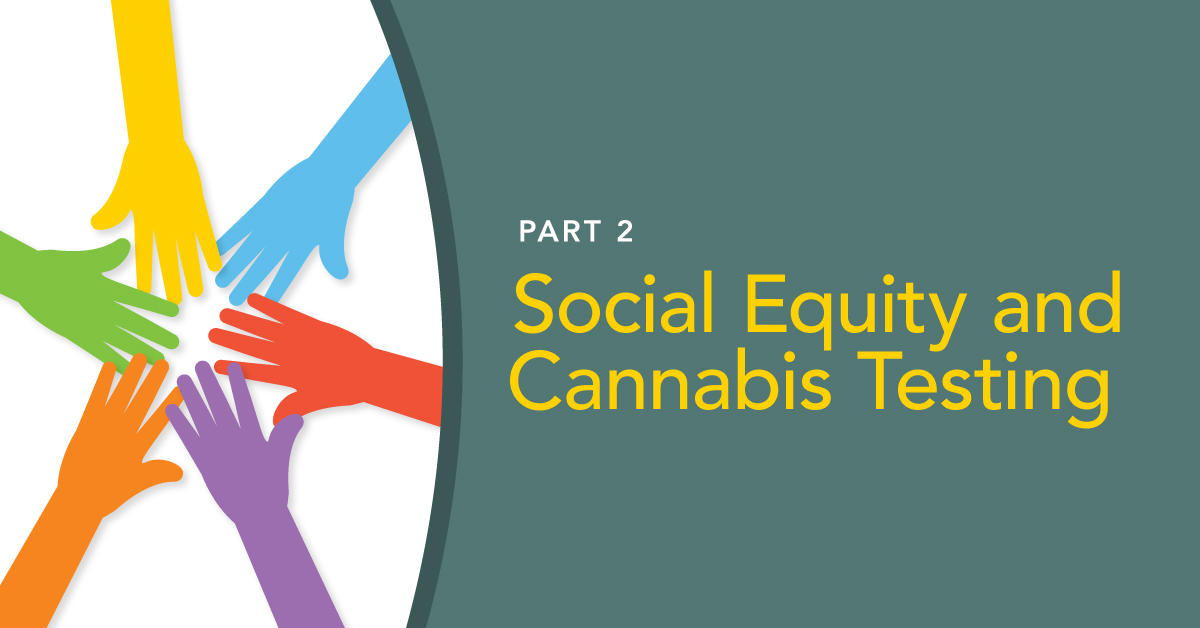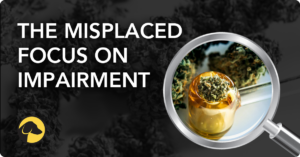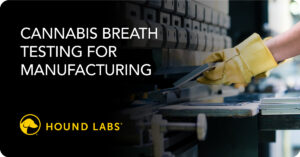
Social Equity and Cannabis Testing (Part 2)
A GROWING CONSENSUS ABOUT HOW TO ACHIEVE SOCIAL EQUITY
As I mentioned in last week’s blog, I had many conversations this summer and fall at both drug testing and safety industry conferences in which employers and industry professionals shared their goals of adapting their current drug testing programs to achieve social equity. I observed a genuine interest in changes that would have a lasting impact and make significant progress towards social equity. The people with whom I spoke understood that if they wanted to maintain safety, they needed to continue to test for cannabis, but that they could also affect change by undertaking a comprehensive approach to adapting their drug testing programs.
THE FIRST STEP: A NEW CANNABIS TEST FOR A NEW ERA
Employers now recognize that the legal status of cannabis combined with traditional cannabis tests tilts the scales towards social inequity – an unsustainable situation, especially in a tight labor market. Fortunately, the current state can be addressed equitably and without sacrificing safety. As I discussed last week, traditional cannabis tests of oral fluid, urine, and hair cannot provide the one critical piece of data that employers need to make fair decisions – whether employees used cannabis recently and are therefore likely to be impaired. However, by adding breath testing technology to detect very recent cannabis use, employers can have objective information about what really matters most – when employees used cannabis and whether that use occurred during work hours.
CANNABIS BREATH TESTING CREATES THE FOUNDATION FOR CHANGE
Dr. Lynn created Hound Labs, Inc. with a goal of creating the HOUND® CANNABIS BREATHALYZER to balance SAFETY+FAIRNESS™. As a team, we recognized that cannabis breathalyzers could be a catalyst for change. Employers who test only for recent cannabis use will be rooting their workplace drug testing programs in fairness, allowing them to make additional changes that hinge on objective data.
Once an employer adds a solution like the HOUND® CANNABIS BREATHALYZER, policy changes become easier to enact and enforce. For many employers, one of the fundamental problems with pre-employment cannabis testing stems from the fact that positive results from oral fluid, urine, and hair tests do not correlate with impairment and therefore provide very little useful information now that most employees can legally use cannabis. Using breath testing for cannabis instead of the other types of tests tackles the fundamental issue of whether employers are using relevant and objective data to assess candidates’ cannabis use.
POST-HIRE AND PRE-ACCESS TESTING
The other problem with pre-employment cannabis tests relates to the possibility of biased and discriminatory actions. To achieve both goals of maintaining safety and achieving social equity, employers want to shift pre-employment testing to post-hire testing of all new employees. For example, some companies test all new employees within two weeks of their hire date. Employers provide the details of workplace drug testing policies as part of the new employee information packet. Testing breath for recent use works well with this approach because employers will only have information about employees’ very recent cannabis use and will not have information about activities days, weeks, or months prior to employment.
Another change made possible with the latest breath testing technology involves instituting pre-access testing before employees begin work at the jobsite to proactively prevent accidents and loss of productivity. Companies that want a truly equitable approach will institute pre-access testing for non-safety-sensitive as well as safety-sensitive positions. They realize that a billing clerk who consistently sends incorrect invoices results in losses much like those resulting from an assembly line stoppage for products built incorrectly. Pre-access testing for all ensures that employers do not target employees who hold certain types of jobs that frequently have lower wages. Investing in post-hire and pre-access testing while testing only for recent cannabis use builds a culture of prevention and sends a clear message to employees that the company wants to retain employees.
ADDITIONAL STEPS TOWARDS EQUITY
Another step toward greater equity includes creating recovery-supportive workplaces and investing in Employee Assistance Programs (EAPs). Both can have enormous benefits for both employer and employee.
When it comes to cannabis, legalization has occurred before education. Research institutions have generally been hamstrung because cannabis remains classified as a Schedule 1 drug under law. The lack of research leads to information gaps and misinformation. But even with what we do know, many people remain confused and misinformed about effects and length of cannabis impairment. Some employees who test positive for cannabis simply need more education rather than immediate employment consequences.
Additionally, employees who struggle with addiction would benefit from access to resources to better understand their issues before employers pursue a punitive course of action. A cannabis breathalyzer cannot diagnose addiction because it only provides data about the window of recent use, just like an alcohol breathalyzer cannot diagnose alcoholism. However, the information that a cannabis breathalyzer provides gives an employer objective data about cannabis use during work hours. Employers can use this information to remind employees about workplace policies and begin conversations about EAPs.
Turnover can be devastating for an employee and most companies want to retain employees. Whether a positive test was due to lack of education or a substance use disorder, a better course of action may be providing an employee with opportunities to address their situation while remaining employed.
CALL TO ACTION
Conversations about social equity have been gaining momentum in the drug testing industry and employers are leading the charge. Cannabis legalization, a tight labor market, and the need for new cannabis testing solutions have accelerated the pace of change. Employers and employees can use this opportunity to affect positive and lasting changes by conducting a comprehensive review of existing drug testing programs to accommodate the new legal status of cannabis and the need for equity. Employers have long understood the importance of drug testing programs to achieve safety, and now they are understanding the importance of balancing safety with equitable treatment of all employees. Adopting the latest breath testing technology can be a step towards balancing the scales between SAFETY+FAIRNESS™.

October 21, 2021
By NINA M. FRENCH
Share












